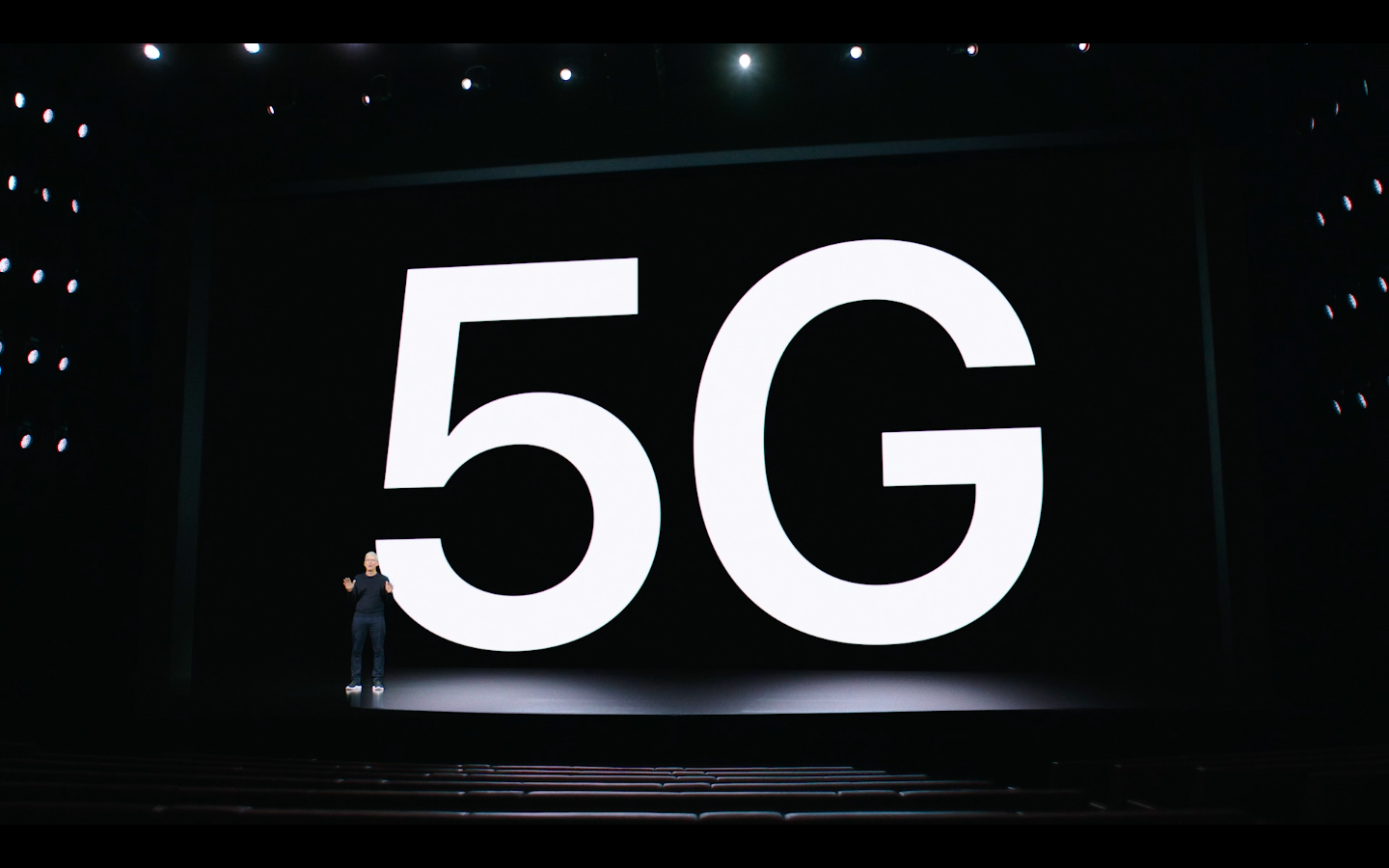
Apple
- Apple’s iPhone 12, which launches on Friday, marks the company’s first smartphones to come with 5G.
- While it’s an important step for the iPhone, 5G support alone isn’t enough of a reason to upgrade.
- The fastest 5G networks operate at a short range and are only found in very limited areas around the US.
- But bringing 5G to the iPhone 12 ensures that the phone will remain relevant in the future as 5G networks develop over the coming years.
- Visit Business Insider’s homepage for more stories.
When Apple CEO Tim Cook took the stage on Tuesday to unveil the iPhone 12 — which launched on Friday — the first upgrade he highlighted was its ability to support 5G.
“Each generation of cellular network technology on iPhone has enabled breakthrough innovations and entirely new opportunities for our developers and our users,” Cook said during the virtual event. “And 5G is the most exciting step yet.”
For months, analysts have anticipated that Apple’s first 5G iPhone will result in a “supercycle’ of upgrades that could make this Apple’s biggest smartphone launch in years. Apple’s iPhone 12 and iPhone 12 Pro made their official debut on October 23, while the iPhone 12 Mini and iPhone 12 Pro Max are arriving in November.
But if you’re thinking about upgrading to the new iPhone, don’t do it just because of 5G.
While it’s true that Apple is one of the last major smartphone makers to bring 5G to its devices, there’s a good reason why. Next-generation 5G networks that are broadly deployed across the United States aren’t all that much faster than 4G LTE.
That means when you unbox the iPhone 12, there's a good chance you'll experience speeds that are similar to those offered by the phone you already own. And it's going to take some time before 5G networks offer phenomenally faster performance.
If you choose to upgrade to the next iPhone, do it because your current device is running slow, or maybe because you have an older model that doesn't have Face ID. Or perhaps because you're looking for a boost in camera performance or battery life.
"Every year it's [5G] going to get continually better," Gordon Smith, CEO of telecoms solutions provider Sagent, said to Business Insider. "It's just not a light switch like people are thinking. It's not going to work that way."
To understand why you shouldn't purchase any new phone just for 5G, it helps to know how the technology works. There are three different types of 5G: low-band, mid-band, and millimeter wave.
RootMetrics, a mobile analytics firm owned by IHS Markit that has conducted numerous studies on the state of 5G in the US, describes the different spectrum types this way:
- Low-band networks can travel far and easily penetrate buildings, but they offer significantly slower speeds than other network types.
- Mid-band networks are faster than low-band and easier to deploy more widely, but there's a limited supply of this type of spectrum available.
- High-band, or millimeter wave, networks offer incredibly fast speeds that are a notable improvement over 4G LTE, but they can only operate at a short range and have difficulty penetrating buildings.
AT&T, Verizon, and T-Mobile all offer nationwide 5G networks, but none of them are based on that high-band ultrafast spectrum that offer the top speeds many associate with 5G.
While reviewing the iPhone 12 on Verizon's nationwide 5G network, I experienced average download speeds of 109.3 megabits per second (Mbps) and average upload speeds of 34.4 Mbps when using the app Speedtest.net to test my connection. That's only slightly better than 4G LTE, which yielded an average download speed of 106.4 Mbps and an average upload speed of 21.4 Mbps.
Ultra-fast millimeter wave networks operate at a very short range and are only available in small areas of select cities across the country. Verizon, for example, offers its Ultra Wideband 5G service in small parts 55 cities across the US. AT&T's 5G Plus network is live in parts of 35 cities in 17 states.
T-Mobile's millimeter wave network is available in seven cities, but the carrier has instead been heavily promoting its mid-band 5G network, which it says will be available in thousands of cities by the end of the year.
That's why carriers like Verizon are focusing more closely on implementing millimeter wave 5G in heavily trafficked areas like stadiums, where it's traditionally difficult to get a signal because of all the congestion.
It's unclear precisely how much better performance on these widespread networks will be compared to 4G LTE. Verizon's nationwide low-band network, for example, will be comparable to a strong 4G network at first, a carrier executive recently told CNET.
A RootMetrics report from March 2020 also indicated that 5G speeds on AT&T's network were similar to or slower than its 4G speeds in Indianapolis and Los Angeles. The report also found that T-Mobile's 5G speeds were slower in Indianapolis and Washington D.C.
The bottom line: A lot of factors can affect cellular network speeds, meaning you shouldn't expect to see blazing-fast 5G speeds right away.
"There's no black-and-white answer because it can depend, down to every individual cell tower, as to what speeds your going to get," Ben Wood, chief of research at CCS Insight, said to Business Insider.
With all this in mind, you may be asking why Apple has made such a big deal about putting 5G in the iPhone 12. For one, it's a necessary move to remain competitive with rivals like Samsung and Huawei, two of the world's biggest smartphone makers, which already offer a number of 5G phones.
"If they didn't have that technology available, it would be a bad statement to the market that they're behind Samsung by what is now a year, could be two years, if they don't launch now," Smith said.
The addition of 5G is probably more important for the iPhone's longer-term future than it is for immediate sales of the iPhone 12. By bringing 5G to the iPhone now, Apple is ensuring that the iPhone 12 will remain relevant two or three years from now — when networks are more fleshed out and users can take advantage of the better performance it can offer in dense areas like stadiums.
Plus, Apple tends to keep certain iPhones in its lineup for years following their launch. The iPhone XR from 2018, for example, is still included in the company's 2020 offerings. Adding 5G to all models of the iPhone 12 gives Apple the flexibility to keep certain iterations of the phone in its lineup two or three years from now without asking customers to compromise by sacrificing 5G.
5G may not change the way you use your phone in 2020, and it certainly isn't the only reason you should consider upgrading your phone. But many experts believe it could eventually pave the way for the next generation of apps, much like 4G LTE set the stage for services like Uber and Instagram. And no tech company wants to be left sitting on the sidelines when it comes to laying the foundation for what's to come.
"I don't really know what those apps are yet,"Wood said. "But I can assure you that over the next 10 years, as 5G technology rolls out and becomes the standard technology in the world, some amazing new applications will appear."

